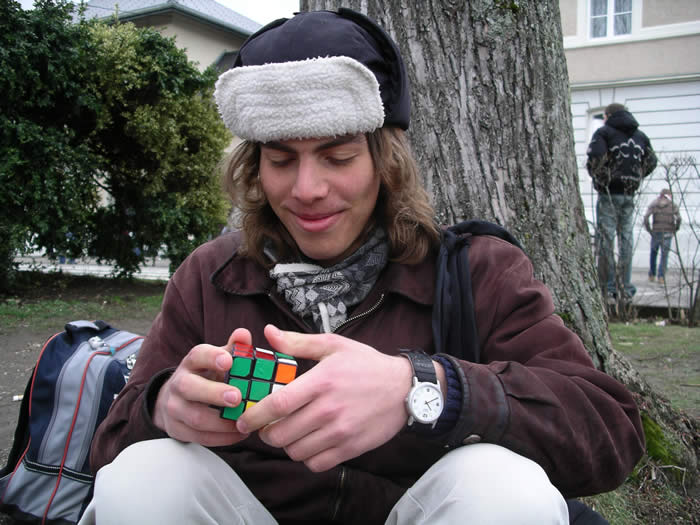
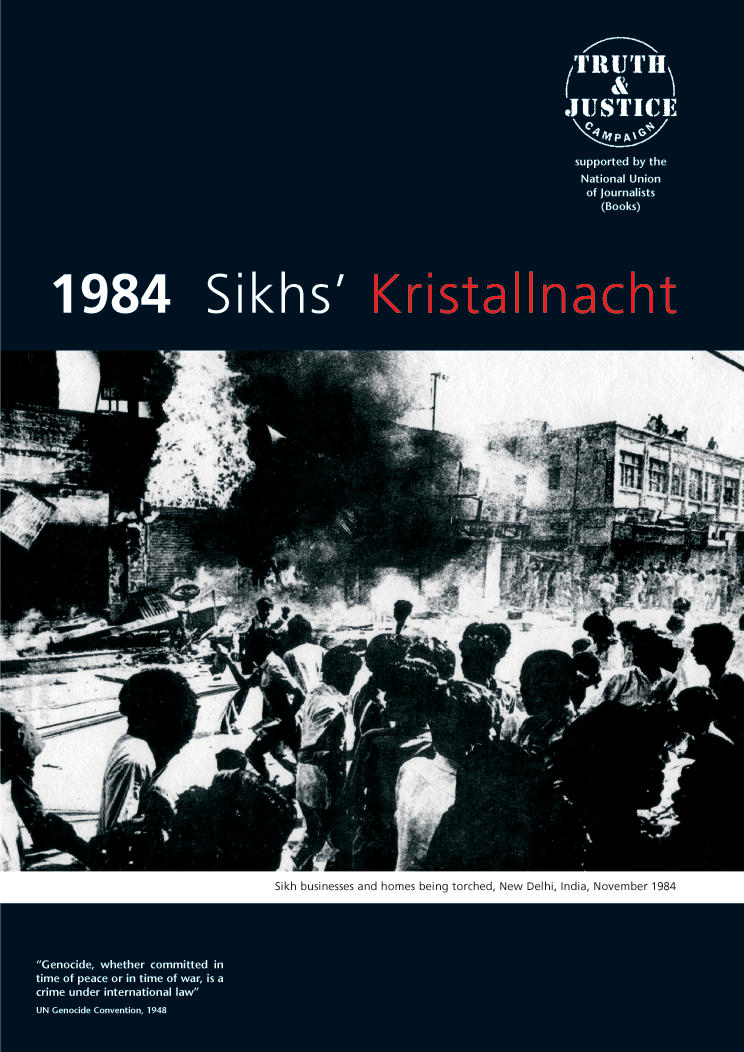 As we like to keep our readers updated, I wanted to let you know about some current events that you shouldn’t miss as well as some programs and resources that you can do with your own family and friends in your hometown.
As we like to keep our readers updated, I wanted to let you know about some current events that you shouldn’t miss as well as some programs and resources that you can do with your own family and friends in your hometown.
- The Jakara Movement conference: “Remember 1984: Reflect. Respond. React.” With limited days remaining, register BEFORE THURSDAY (June 4th, 2009) to avoid the late fee. I have written about it in the past. You won’t want to miss it.
- Last week, I wrote about the “Sukhmani Sahib for the Shaheeds” project. You can participate in your hometown by arranging a Sukhmani Sahib this weekend. Be part of a national group and download the packet from here. The packet contains, instructions, other upcoming events, and a special Benti to be read during the Ardas. Even if you can’t make it to Fresno for the conference, honor the memory of our Shaheeds through Sukhmani Sahib.
- Finally Sikh organizations have come together to off for free the Sikhs’ Kristallnacht booklet to educate Sikhs and non-Sikhs alike:
Kes is an important part of the Sikh identity but it also carries social, cultural, and political meaning for more than just Sikhs. Recently, a film student from NYU explored this less explored cross-cultural perspective by speaking with 3 individuals from various backgrounds in an interesting (and short-18 minute) documentary.
The film engages with a Sikh (Sonny Singh from the Sikh Coalition’s New York office), an African-American woman, and a woman with trichotillomania – a disorder that causes the sufferer to compulsively pull out hair. We often consider kes in the context of religion, beauty, and identity; but rarely do we do so in a cross-cultural perspective (unless you grew up in a culturally diverse community). The film is thoughtful and thought-provoking, so I’ll let it speak for itself. It includes footage from the recent Sikh Day parade in New York City, as well as a pagh tying competition in Richmond Hill.
[hat tip: sonny]
Hair… As one of the most important aspects of how others see us, how has our hair become interwoven with issues of race, religion, beauty, and identity?
Sikhism mandates that the hair is never cut. We explore the rationale behind this and the discrimination that Sikhs face today in a post 9-11 world.
Many women of African descent grow up to think negatively about their natural hair. So begins the burdensome, expensive, and often painful process of weaves and chemical straightening, as a however subconscious attempt to achieve a homogenized concept of beauty. We speak to a woman who takes pride in her natural hair and is committed to show others how truly beautiful “nappy” hair can be.
Sometimes what we do with our hair is not a choice. Trichotillomania is a disorder that causes the sufferer to compulsively pull out hair. We will meet a long-term lash/brow puller who describes how people have reacted to her disorder and how these experiences have shaped her. [link]
Many students face physical and psychological bullying in schools- elementary, middle, and high. But Sikh students, male and female, often face especially severe bullying. Over the past couple years, some severe cases have come into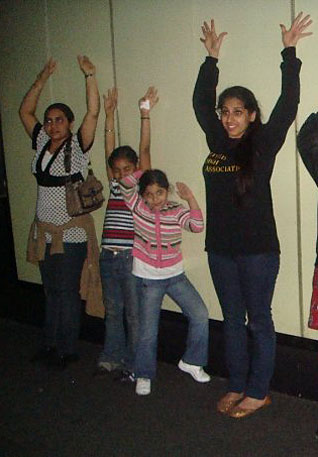 the public eye, including one teenager’s patka being set on fire, and others whose hair was forcibly cut. For statistics on the prevalence of harassment against Sikh students in New York schools, check out the Coalition’s report, “Hatred in the Hallways.”
the public eye, including one teenager’s patka being set on fire, and others whose hair was forcibly cut. For statistics on the prevalence of harassment against Sikh students in New York schools, check out the Coalition’s report, “Hatred in the Hallways.”
One pro-active student at Baruch College (of the City University of New York) has come up with a simple and creative way to provide support to kids facing harassment. Through his school’s Sikh Student Association, he started a mentoring program called Sikh Scouts. The students, aged 5-12 are paired with older Sikhs of the same gender, and go on a day’s outing together.
Sikh Scouts is essentially a small-scale Sikh youth mentoring event that aims to forge and develop a long-lasting relationship with children in need of good Sikh role models to help them guide them on the path of Sikhi. [link]
One of the students from Baruch that participated in the program wrote about the experience.
After they warmed up to us and broke through their initial shyness, the kids couldn’t stop talking about their favorite movies, TV shows and music – the Jonas Brothers and what not. And in between all of that, we got down to the serious issues: a majority of the kids did not enjoy school and felt uncomfortable because of harassment or teasing by their peers. [link]
There might not be much that anyone, including the older Sikh Scouts, can do to make the bullying stop- after all, kids will be kids. But what we older Sikh students can do for our younger counterparts is to be a source of strength, share insights about why it’s important to be comfortable with who you are whether it fits someone else’s definition of cool or not, and be there to offer advice for specific situations. There are things we’ve learned in hindsight that can benefit those facing the same harassment today.
 With Obama’s move for a new strategy, recently, we have seen an avalanche of different articles from Af-Pak, the newly vogue name for the region. I will begin with some more macro-debates, before turning to the Sikh-specific.
With Obama’s move for a new strategy, recently, we have seen an avalanche of different articles from Af-Pak, the newly vogue name for the region. I will begin with some more macro-debates, before turning to the Sikh-specific.
An interesting analysis was recently featured in the London Review of Books, in an article titled ‘Taliban versus Taliban.’ In the article, the Economist correspondent, Graham Usher, notes that Americans have a problem in understanding the complexities of the “Taliban” phenomenon because it means different things to different people at different times.
All politics is local and that is how the Taliban should be treated as well. Made up of diverse factions and groups with widely separate ideologies, we “lump” them under a specific tag – “Taliban.” While for the US, anyone that attacks them in Afghanistan is Taliban, for the Pakistani Army, their perspective is a bit different. The only issue that really matters is if the group works in India’s strategic interest. Thus there are ‘good’ elements and ‘bad’ elements:
The short answer is pro-India, in practice if not intent. Insurgents in the tribal areas are deemed anti-Pakistani if their actions advance the perceived goals of India in Afghanistan. They are pro-Pakistani as long as they don’t attack the Pakistani state or army, even if they launch attacks against Nato forces in Afghanistan, Islamabad’s supposed allies in the ‘war on terror’. Indeed, the Afghan Taliban is considered an ‘asset’, a hedge against the day when the US and Nato leave, but also a counter to India’s expanding influence in Afghanistan.
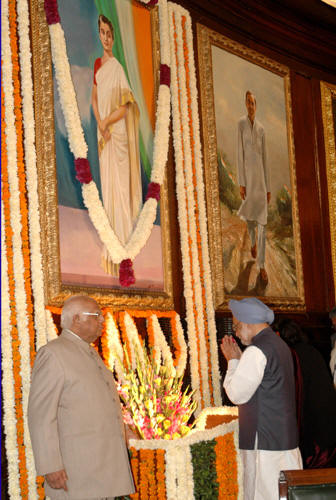 I remember that night…election night, watching on TV students rejoicing in the streets outside of Howard University (a local Historically Black University). I’m not sure how much of it was about Obama’s policy, or just the “historic” nature of the event, but it was all summed up to me as an African-American student holding back his tears said to a reporter, “I’m just so happy to have one of our guys in power.” It was a common sentiment, but this statement stuck in my head for several days. What did he mean by this? What was his expectation of President Obama over the next 4 years? Did he think just because a black man is in office, all of a sudden the American experience will now change for black people? That the wrongs of their history will now become right? That discriminatory laws and policies toward black people will all of a sudden be overturned? If that is what he meant, then I understand the celebration…but I would celebrate with caution.
I remember that night…election night, watching on TV students rejoicing in the streets outside of Howard University (a local Historically Black University). I’m not sure how much of it was about Obama’s policy, or just the “historic” nature of the event, but it was all summed up to me as an African-American student holding back his tears said to a reporter, “I’m just so happy to have one of our guys in power.” It was a common sentiment, but this statement stuck in my head for several days. What did he mean by this? What was his expectation of President Obama over the next 4 years? Did he think just because a black man is in office, all of a sudden the American experience will now change for black people? That the wrongs of their history will now become right? That discriminatory laws and policies toward black people will all of a sudden be overturned? If that is what he meant, then I understand the celebration…but I would celebrate with caution.
Five years ago, many Sikhs were celebrating in the streets as well. Finally, one of “our guys” had become Prime Minister. Manmohan Singh was elected selected as the 17th Prime Minister of India, by Sonia Gandhi herself. Sikhs all over the world rejoiced. Even many of the Sikh political prisoners in jail were celebrating with this victory, believing their release was now imminent.
Even some of my more progressive and panthic-minded friends got caught up in “Manmohan Singh Fever” and encouraged me to give him the benefit of the doubt. After all, how could we judge him? Who knows what he may do for us?
I, however, remained skeptical.
 I know, from personal experience, that Sikh student organizations are always looking for a way to “get involved” and participate in a good cause. So, when I read about a recent initiative encouraging this type of active involvement, I cheered (abeit silenty… and to myself). The Sikh Spirit Foundation is an organization dedicated to promoting sikh values through education. In line with this mission, the Foundation recently launched a contest looking for project ideas which could help sikh education or our local gurdwaras.
I know, from personal experience, that Sikh student organizations are always looking for a way to “get involved” and participate in a good cause. So, when I read about a recent initiative encouraging this type of active involvement, I cheered (abeit silenty… and to myself). The Sikh Spirit Foundation is an organization dedicated to promoting sikh values through education. In line with this mission, the Foundation recently launched a contest looking for project ideas which could help sikh education or our local gurdwaras.
Help us assist the Sikh Community. Tell us how you would spend $25,000 to improve Sikh education or your local gurduara for a chance to win an iPod!
Submit two written paragraphs explaining what you would do and how it would help the Sikh community. Ideas will be judged according to feasibility, impact and need.
The Sikh Spirit Foundation intends to pursue the winning idea this summer by inviting the global community to submit proposals for the project. The Foundation will select and fund the best proposal among the submissions. [link]
Some of the organization’s grantees include: Ensaaf, Gyan Sewa Trust, Nanakshahi, Sikh Coalition, SikhNet, Sikh Research Institute, and Ujjaldidar Singh Memorial Foundation.
We’ve previously discussed involvement in the Sikh cause and lac(k)tivism – so it would be great to hear how youth and student organizations take the opportunity to suggest solutions to problems in gurdwaras and provide ideas for improving sikh education. Whether we acknowledge this or not, we are building a world today where our children will live tomorrow. To see the positive impact, it really comes down to how much we are willing to invest in our community today. We encourage you to go directly to the website to read submission guidelines – however, if you’d like to leave some thoughts here too – we’d love to hear your ideas!
 In a brutal attack, a homeless Sikh man, Navtej Singh Sidhu, in Italy was attacked and set on fire. While news of our brothers and sisters in Italy does not always feature prominently in The Langar Hall, the horrific nature of this attack has received international press and proper condemnation from Italy’s President, Giorgio Napolitano.
In a brutal attack, a homeless Sikh man, Navtej Singh Sidhu, in Italy was attacked and set on fire. While news of our brothers and sisters in Italy does not always feature prominently in The Langar Hall, the horrific nature of this attack has received international press and proper condemnation from Italy’s President, Giorgio Napolitano.
The President stated:
“By now, these cannot be considered as isolated events but as alarming symptoms of a widespread trend that is unfortunately growing,” he said.
“I appeal strongly to those who have institutional, cultural and educational responsibility to commit themselves fully to putting a stop to any display of xenophobia, racism and violence.” [link]
[Sorry for a quick digression, but it is interesting that last week I reported on TOI’s usage of religion. When reporting about Khalsa murder of Hothi, the TOI was quick to use the word ‘Sikh’ in the headline. In this attack, the TOI article’s headline is Italian President slams racist attack on Indian.]
I. Introduction
My last post, which addressed the First Global Sikh Civil Rights Conference held by the non-profit group United Sikhs, generated significant discussion. In an attempt to re-focus and reinvigorate that discussion, I wish to first clarify what the post was not about — it was not intended to serve as an indictment of the United Sikhs’ work overall, to criticize specific projects or initiatives other than the conference, or to compare their efforts to that of other Sikh organizations with greater financial resources. Some of the comments did touch on these subjects, though this was not my intention.
My sole interest was and remains the manner in which the United Sikhs decided, on its own, to describe the conference and the report to the public, including necessarily the Sikh members of it. I wrote that it was “the United Sikhs’ characterizations of the conference and report” that I found problematic. Regrettably, the comments to my post — some made spiritedly by United Sikhs Director Mejindarpaul Kaur and others working for or affiliated with the United Sikhs — have done little to assuage my earlier concerns.
 To my surprise, I came across a news article with the headline, “Sikhs Agree on a Global Civil Rights Agenda.” When did we do that??
To my surprise, I came across a news article with the headline, “Sikhs Agree on a Global Civil Rights Agenda.” When did we do that??
It turns out that the United Sikhs — a non-profit organization that addresses various civil rights issues on behalf of Sikhs, especially and including the French ban on conspicuous articles of faith — issued a press release indicating that the group held the First Global Sikh Civil Rights Conference at which the First Global Sikh Civil Rights Report was presented and adopted.
At the outset, I should note that I respect the United Sikhs’ work, most notably its humanitarian efforts. I also appreciate its interest in developing a set of broad Sikh civil rights issues and recommendations on how to tackle those very issues. The Report itself contains a wealth of information on the Sikh experience in many different countries, most of which are often overlooked in discussions of the Sikh diaspora. The breadth of the report is impressive; a lot of effort seems to have been put into its publication.
That said, the United Sikhs’ characterizations of the conference and report are troublesome in at least several respects — its factually inaccurate, grossly misleading, and plainly self-serving.
A couple of weeks ago TLH reported on an incident involving the Tagore family in Houston who suffered what can quite easily be classified as police brutality after having called for help. The family called nine-one-one after finding out that their home had been burglarized, but when the Sheriffs arrived, instead of viewing and treating the family as victims of a crime (which was more than apparent from the fact that the Sikh family called the police for help) – the Sheriffs viewed and treated them as outsiders and criminals – seeing only their Guru given turbans and kirpans.
As a sign that things may change – there have been reports that the new Sheriff-elect, Adrian Garcia, has pledged:
I will be offering just a good ear…I think that this is one of those roles that an elected official serves. We’ve got to always be ready to listen to any segment of the community when there’s concern and understand it.
He also made a visit to a Gurdwara and:
[P]romised to expand the department’s cultural diversity training, to help personnel better understand the diversity of the county. “I think it starts with leadership,” he said, “and that’s why I’m making myself available.” [Source]
Yes, now it’s our turn….The debate has been raging in the South Asian blogosphere and although this post is extremely late, the issue is still important, especially for those Sikhs in the diaspora.
The issue surrounds that of Sonal Shah. Sonal Shah, like many young ambitious desis in the US, has an exceptional resume with the US Department of Treasury, the World Bank, the Center for Global Development, and even worked as a VP for Goldman Sachs. The most recent entry on her resume includes working as the head of Global Development Initiatives for google.org. With regards to the desi community she was able to establish the successful Indicorps project that serves as a conduit for those wishing to volunteer in India in 2001 (as a completely unrelated note, it is interesting to see the Sikh initiative FATEH in Punjab started almost 5 years prior to Indicorps).
Now before you start wondering why I am posting her biodata/resume, it will become pertinent if you keep reading, I promise. So during the recent American presidential election, Shah acted as a technology advisor to the Obama campaign team and was recently announced to be on the Obama-Biden transition team.
All was quiet on the western front until Vijay Parshad, a well-known academic that holds the George and Martha Kellner Chair in South Asian History and Professor of International Studies at Trinity College wrote an article on a popular blog, titled “Obama’s Indian: The Many Faces of Sonal Shah.” As he later wrote, this one created “a little kerfuffle.”
Last week on TLH we addressed the police brutality faced by the Tagore family in Texas.
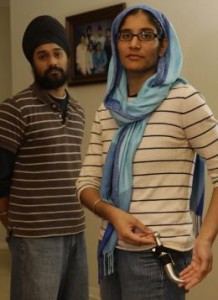 You will find here a consolidated list of how to TAKE ACTION NOW on this injustice. Different organizing tools are available for the Sikh community to act, we just need to use them. Taking action in at least one way is better than none!
You will find here a consolidated list of how to TAKE ACTION NOW on this injustice. Different organizing tools are available for the Sikh community to act, we just need to use them. Taking action in at least one way is better than none!
Please remember, we have to empower ourselves as individuals and a community to take action and not just rely on a few community lawyers or media-based activists. Our actions as a whole are much stronger than a few!
Sign A Sikh Coalition Petition here: Harris County Sheriff-Elect Adrian Garcia is visiting the Sikh Center of Houston on Sunday, December 14, 2008. He will be the new Sheriff for Harris County next year. This petition will be directly handed over to him, so please help us gain as many signatures as possible.
Submit A Question here: Harris County Sheriff-Elect Adrian Garcia is visiting the Sikh Center of Houston on Sunday, December 14, 2008. During his visit the Tagore family and sangat members will be able to ask him questions on the actions he will take in response to the treatment of the Tagore family by police officers. Submit a question for the Tagore family to ask Sheriff-Elect Garcia directly when he visits the Gurdwara.
Call numbers available here, here, and here (numbers are also in the comments section): A few pointers when calling are-
- Be Polite and Respectful
- Express your concern about police brutality and specifically the needless handcuffing of Kawaljeet Kaur Tagore and her family members, including her 60 year old mother
- Express your concern about the needless use of foul curse words against the family by officers
- Express your concern about the lack of knowledge by officers on Sikhs and Sikh practices
Please tell your family and friends about these different ways to act NOW … at the end of the day your voice is stronger in spreading the word than a TLH post, any blog, or an organizational e-mail! 
Coblogged by: Jodha and Mewa Singh
Well it doesn’t seem by the number of comments (0) that this first attempt at a book club garnered much interest, although by the number of hits, it has been extremely popular. Regardless, for us it has been a 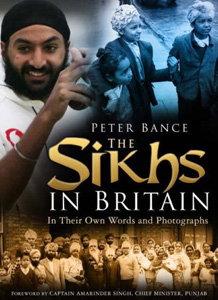 great excuse to read a great book….So we’ll continue. PS: the side picture is related to a soon-to-be-available coffee table photography book.
great excuse to read a great book….So we’ll continue. PS: the side picture is related to a soon-to-be-available coffee table photography book.
———————————————–
The two chapters read this week probably deserve separate blog posts, but still in the interest of time and space, we are going to keep them together.
Chapter 5 deals with “Homeland Politics: Class, Identity, and Party” and Chapter 6 is about “British Multiculturalism and Sikhs.”
The authors begin chapter 5 by noting that:
Associations of immigrants in Britain have generally served two functions: to facilitate the integration of the new arrivals and as conduits of homeland politics, and these functions have further strengthened with the onset of globalization, which has underpinned the rise of nationalism and diaspora movements. (94)
1984 is seen as the ‘critical’ event that intensified Sikh religio-ethnic self-identification with large numbers of Sikhs. The mammoth protest at Hyde Park on June 10, 1984 may still be vividly inscripted upon the memories of many Sikh-Britishers.
Still the associations and groups that were created to manifest this new religio-ethnic self-identification and homeland politics were along the lines of traditional associations. While there was something new in what came out of the community after 1984, there are continuities as well.
Tracing the evolution of various causes within the Sikh community, the authors note moves from the politics of class (IWAs [Indian Workers Association] up to the early 1980s), to the politics of identity (Khalistan 1984-1997), to emphasis on political organization (Sikh Political Party, UK) (94).
Unfortunately South East Asia’s coverage in The Langar Hall remains sparse, except for often tragic stories that make the world headlines.
Here we report on something much more pleasant.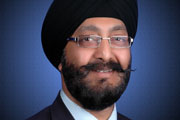
It seems that in New Zealand, we have our first Sikh elected as a member of parliament (MP). Delhi-born businessman, Kanwaljit Singh Bakshi, won his precinct as a member of the conservative National Party, winning the immigrant-dominated Manukau East constituency in suburban Auckland.
Now I am the first to admit that I don’t know much about New Zealand’s politics, nor much about the National Party (other than that the “Nats” seemed poised to form the new government in New Zealand, after nearly a decade of Labour Party rule).
Still for some strange ethnic solidarity purpose (although I have a feeling I would have not voted for Bakshi), I do think his victory is a good thing for New Zealand in general and the Sikh community there in particular.
As an UPDATE to my post a couple weeks ago, the Sikh Coalition has released the “2008 Presidential Elections Voter Guide For Sikh Americans”. P.S. McCain never responded … the guide contains some of his answers collected from outside resources (the Coalition became our #1 research assistant)!
According to the Sikh Coalition:
Our candidate questionnaire was provided to both the major party candidates in November 2007. Since then, the Sikh Coalition has provided all candidates multiple and repeated opportunities to answer its questionnaire. Our Voter Guide reflects the answers of the candidates who responded to our questionnaire.
The Sikh Coalition’s Sikh American Voter Guide includes information about how and where to vote on Election Day, summaries of proposed laws that affect Sikh interests, and the presidential candidates’ answers to our questionnaire. Of the 13 candidates running for president of the United States, a total of five responded to the Coalition’s questionnaire – including one of the two major party candidates.
The 25-page guide-book has a brief biographical section on all 13 candidates running for President, along with pictures (Prabhu Singh Khasla … Ralph Nader is represented)! In addition, responses from the candidates on questions addressing:
1) Relationship With Sikhs
2) Hate Crimes
3) Religious Profiling
4) Employment Discrimination
5) Discrimination
6) Asylum
7) Immigration
Check it out! Let’s us know what you think! Make copies and get them out to your sangats at local Gurdwaras before next Tuesday!
Vote On Tuesday (11/04/2008)! You can find your local polling place through Google here!


“I don’t trust Obama. I have read about him and he’s an Arab.”
So said a McCain supporter at a recent rally. To such an ignorant, bigoted, racist comment, McCain could only reply:
“No, ma’am,” he said. “He’s a decent, family man, a citizen that I just happen to have disagreements with.”
McCain did not say that Arabs are decent people, instead we are left to infer that “Arabs” and “decent, family man” are somehow antonyms. Barack Obama should not be let off the hook either as he is just as complicit. Earlier when his Democrat primary opponents were trying to smear him, he distanced himself from being Arab and Muslim (which of course he is not!), but did not stop that conversation and say Arabs and Muslims are just as American as anyone else.
[updates in italics]
The New York City school system has established a new process for reporting bias and bullying, prompted partially by Sikhs marching in Queens, led by the Sikh Coalition, two months ago. 1.1 million students will be affected by the new regulations. 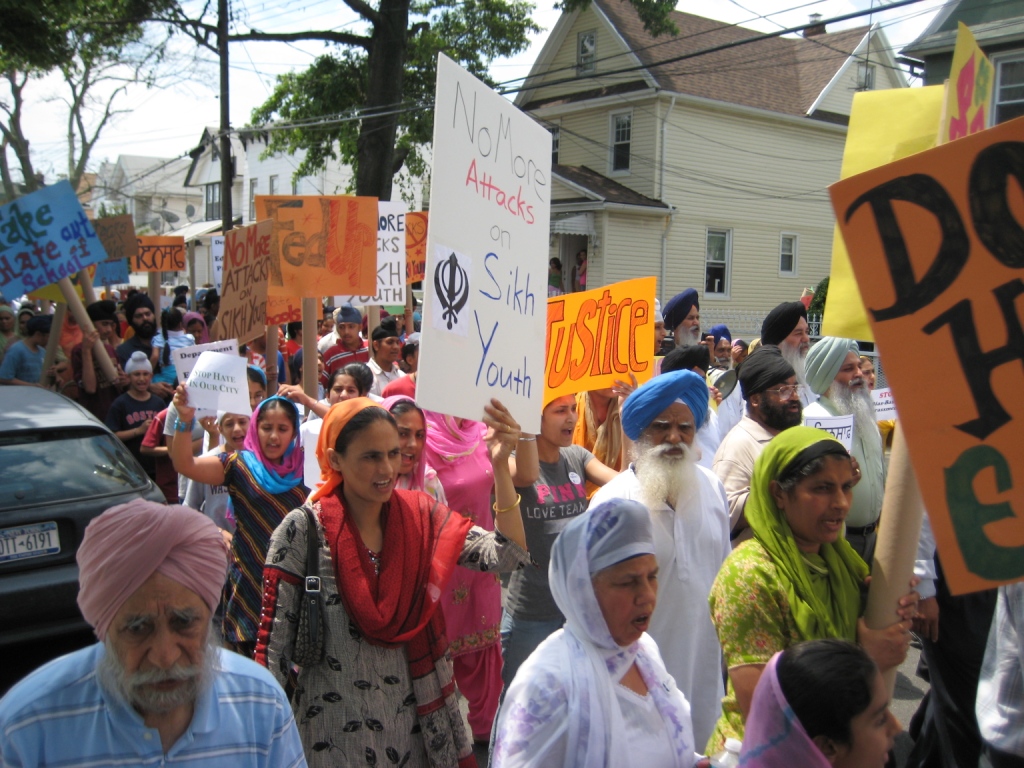
The new regulation — which is intended to prevent bullying based on a student’s ethnicity, national origin, religion, gender, sexual orientation or disability — comes two months after leaders of the Sikh population marched in Queens to protest attacks against Sikh students and what the leaders described as a lackluster response by the public school system. [link]
What is this new regulation? It includes several important provisions:
- Every principal must designate a staff member to whom students can report bullying and harassment episodes.
- A new e-mail address — RespectForAll@schools.nyc.gov — has been set up so that students who have been harassed, but do not feel comfortable reporting it to their school, can seek help.
- Each school must create an annual plan “to ensure that it has a safe and supportive learning environment,” and train students in the new rules so that they understand what behavior is prohibited and where to go for help if they have been bullied.
- Schools will have to report all complaints of harassment, intimidation or bullying within 24 hours, and conduct full investigations, including interviews and written statements.
- A full investigation of an incident within 5 days
- A written report for the alleged victim of the results of any incident within 10 days
- School staff members who witness or are told about bullying episodes must report them, and schools must contact the families of accused students. [link]
It seems that “Respect for All” will be a idea promoted by NY schools this coming year, and trends in bias-related bullying will also be tracked.
Young Sikhs are extremely internet savvy. From the proliferation of videos on youtube to remixed dhadhi-jatha to an embrace of web 2.0, many young Sikhs are at the forefront of creating new avenues for education about their faith. While I personally believe that most Sikhs focus their attention on education for non-Sikhs, in my opinion, far more crucial is the intra-Sikh education.
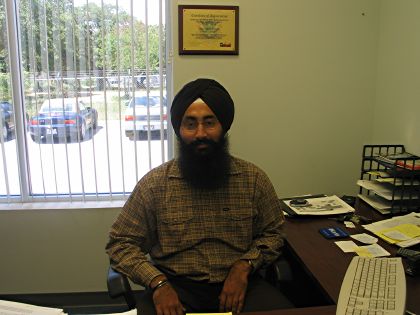 While in an earlier discussion I talked about the importance of the KhalsaKids website, launched last year by the Sikh Coalition. It is an example of Sikhs experimenting with new media forms to better address the needs and concerns of their community.
While in an earlier discussion I talked about the importance of the KhalsaKids website, launched last year by the Sikh Coalition. It is an example of Sikhs experimenting with new media forms to better address the needs and concerns of their community.
In a similar vein, the Sikh Research Institute has recently announced its plans for a “webinar” series, titled “Liv.”
Explaining the impulse of this new project, SikhRI head, Harinder Singh, states:
“We are regularly in touch with Sikh communities in North America, Europe and Asia who want us to deliver programs in their local communities on a regular basis, but it’s been quite difficult due to logistical and financial constraints. Now that we are introducing webinar facilities, our programs can reach anyone around the globe and we look forward to being able to engage with the vast Sikh communities outside of our traditional target area in North America”[link]
The “Liv” project entails four 90 minute seminars to begin at 8am PST (California time) on 4 consecutive Saturdays, beginning September 13, 2008. The first four topics listed on their website includes: “Sikhi – A Gurmat Framework,” “Bani – The Idea,” “Tavarikh (History) – The Revolution,” and “Rahit – The Lifestyle.”
A pre-registration is required to participate in the “webinar” and can be completed here.
While waking up at 8am on Saturdays is beyond my abilities, the seminars being conducted by The Harinder Singh sound intriguing and informative. I hope some of our readers can that do participate can discuss some of their thoughts on the format and the content here.
Also what are new ways that you have seen Sikhs embracing Web 2.0? (yes I am already aware of that one blog, uhhh but I can’t think of the name.)
The Sikh Research Institute (SikhRI) reported today that Arpinder Kaur, 28, of San Antonio, Texas has become the first turbaned pilot hired by a commercial airline in the United States. As a Sikhni, she has helped pave the way for both Sikh men and women who wear a dastaar/turban to fulfill their passion for flying. No longer does flying just have to be an extra-curricular activity for these Sikhs, but it can also be an every-day job!
States. As a Sikhni, she has helped pave the way for both Sikh men and women who wear a dastaar/turban to fulfill their passion for flying. No longer does flying just have to be an extra-curricular activity for these Sikhs, but it can also be an every-day job!
In March 2008, after resolving the issue of wearing her dastaar on-the-job, with the help of the Sikh Coalition, Arpinder Kaur was officially hired by American Airlines Corporation (AMR) as a First Officer. She filed her grievance for accommodation of her religious article of faith based on American Airlines’ allowance of “regulation approved hats”. An agreement was reached that is consistent with state and federal anti-discrimination law. In June 2008 she finished her pilot training program and is now flying Embraer Jets for American Eagle, a regional airline that is part of AMR based out of the Dallas-Fort Worth International Airport.
When Arpinder Kaur was asked why she chose to do this, she said:
“Two of the reasons I did this were: first, my love of flying and, second, to set a precedent for the community so they know you can be in your Sikh appearance and do anything out there; so that my younger brothers and sisters [the rising generation] will pursue their passions while practicing their Sikh faith.”
Her passion for flying first started when at the age of 15 she got to sit in the cockpit of an airplane when moving from Panjab. Despite having a degree in Information Systems and her mother’s belief that it was too dangerous for a girl to be a pilot, Kaur has chosen to follow her passion; while using it as a means for supporting her family. Kaur said it was the love and support of her husband, Pritpal Singh that pushed her forward on the path toward becoming a pilot. Kulbir Singh Sandhu, captain with AMR mentored her throughout her aviation career. From 2003 to 2005 Kaur was trained by Jesse Sherwood in Kansas. With the help of these individuals and others along with her own perseverance and determination, Kaur and American Airlines have shown that accommodation and not assimilation is the way to harness the strength of diversity in America.
Harinder Singh, executive director of the Sikh Research Institute (SikhRI) in San Antonio, Texas said, “This is a great day for the Sikhs in America. Religious accommodation, not assimilation, is what the founders of this great nation envisioned and we are thrilled American Airlines celebrates the rich religious and cultural diversity of all American populations.”
Here is a short film on Arpinder Kaur and “piloting”:
We’ve occasionally, briefly discussed the current French ban in public schools on articles of faith. Recently, the Sikh Coalition invited high school students from all over the world to submit entries into their Diversity Essay Contest on “The Role of Freedom of Religion in the context of Contemporary Society.”
Students were asked to take one of the following two sides on the French Parliament’s ban on conspicuous “religious” articles of faith from public schools:
- If you favor the ban: While engaging with issues faced by communities impacted by the ban, please discuss how France’s conception of secularism (laïcité) can be used to shed light on the ban.
If you oppose the ban: What makes you oppose it? Please outline a strategy through which the international community may be mobilized to force France to repeal the ban.[link]
The first place winner was Casey Friedman, from Alameda, CA whose essay can be viewed here. An excerpt from this winning essay:
“Although Article 10 of the high-minded Declaration of the Rights of Man and the Citizen states explicitly, “No one should be disturbed on account of his opinions, even religious,” and although the Constitution of the Fifth French Republic recognizes the Déclaration as fundamental law (“La Déclaration”), France today finds itself uncomfortably pulled in every possible direction by the forces of religion, popular will, secularism, and natural right.” [link]
This competition seems like a great way to engage youth both in and outside our community in a conversation on freedom of religion.

